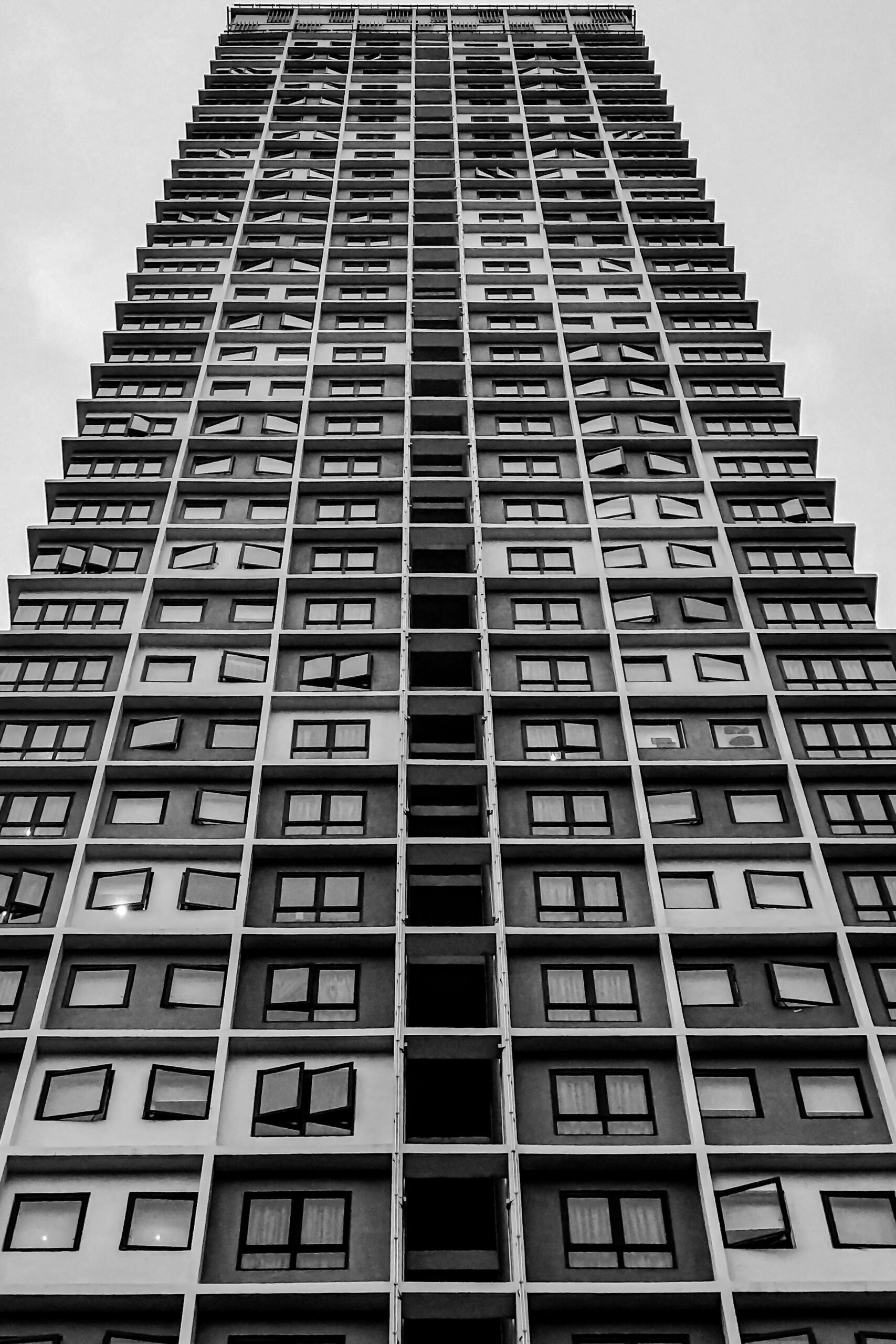Imagine this, you’re living in a renovated farmhouse, far away from the big city, you’re growing your own vegetables, you’re collecting rainwater. Your little homestead is powered by sunlight, you’re close to nature and when you walk out of your front door there is no noise from cars or highways, it’s just silent, fresh air.
This might sound like an environmentalist’s dream, but if you want to live sustainably, you should actually be living more like this.
The most sustainable home is not what you think
Man am I about to make some people angry, or maybe just disappointed in this video, if you feel personally victimised by what I am about to say, I am sorry. The point of this video is to separate the idea of sustainability, which is so often used to mislead, misrepresent and greenwash what a “sustainable” life is for consumers. So we’re debunking some ideas today so that we’re much less likely to fall into greenwashing traps in the future. The idea of people running in fields wearing rough linen shirts, smiling, and harvesting their own produce is a fairy tale that we are so often told, most frequently to sell us something. And it’s been so effective that today when we think of what the ultimate sustainable and eco-friendly, life looks like, we think of something along the lines of that fairy tale.
And there is good reason for it, the vast majority of people live in big cities today, and the farmhouse with the big garden in the middle of nowhere is the exact opposite of that, and somewhere during the stress and noise and traffic and garbage we crave the quiet life. However, there are many reasons as to why this life isn’t as sustainable as we think.

What the “idyllic” life in the countryside actually looks like
When we look at where consumers have the highest impact it’s our house, our food and our means of transportation. Because most people either live in a house or want to live in a house, they eat meat and drive a car; and those factors make up the majority of our footprint. Living an idyllic life in the countryside increases two of these impacts.
You most likely will need a car to get around. Everything is likely far away, at least too far to walk or bike (if that’s even safe). The countryside also rarely offers well-connected public transportation. Take this from someone who grew up in the countryside where the bus only came every 2 hours. So consumers living in the countryside are very dependent on cars. It’s a lot easier to get around in the city with public transportation. Cities, many at least, and speaking from the privilege of being a European here, are very well-equipped with bike lanes and pavements. Meaning that most residents don’t need a car at all.
Energy-wise it’s also a challenge because an isolated house uses energy less efficiently than an apartment building. When you have an apartment with neighbours below you, beside you and above you, everyone uses less heating, meaning lower consumption of the resources that heating requires. In a house on an open field, it’s a very different case. In an idyllic off-the-grid scenario you might also be inclined to have a fireplace, and that’s just one of the worst ways to heat a home, it’s cosy, but the emissions aren’t in your favour.
Ever since I started talking about sustainability I have received questions about how to be sustainable when living in the city, because seemingly all the things that we associate with living an eco-life is more accessible outside the city. Living in the countryside allows for a big garden where you can grow your own food, space for composting and the availability of small farmers from where you can buy local produce. These things are all great, but they’re not the biggest part of our carbon footprint.
What’s the most sustainable way to live then?
Perhaps this is going to sound a tad depressing, or perhaps you can untighten your jaw because you’re more sustainable than you think; either way: the most environmentally sustainable living arrangement is in a small apartment, in a big building, on a massive boulevard, with high apartment buildings on either side, with a metro running 24 hours day, the apartments are all small and require little maintenance, outside the city are a cluster of windmills that in a targeted manner is providing the city with electricity. The infrastructure for recycling is also much easier in a city, rather than having those big trucks drive countless kilometres between houses in the countryside, they have a few designated pick-up spots in the city, making recycling easier, more efficient and less impactful.
The thing is, humans tend to thrive really poorly in that environment.
The most utopic (or maybe I should say dystopic) living arrangement might be environmentally sustainable but does very little to consider human behaviour and needs. Looking at human psychology and what makes us calm and happy are very different things from what is the most environmentally sustainable.
In many way, the utmost sustainable living arrangement is incredibly stressful to many people. Not only because of the 24-hour metro, but city-scapes like this leave very little room for nature, trees, parks, and green areas, and these tend to calm us down. Also when there are no trees, these buildings create wind tunnels which means that it’s most often very windy in neighbourhoods like this, which can also be quite stressful for humans. Because the buildings are tall, it means that there is basically no shadow or cover from sun and rain, and the roads are very wide which means that it’s hard to navigate traffic and it’s hard to see other people. These city-scapes can often isolate its population, neighbours are often strangers, and there aren’t necessarily a lot of places that centre community, which then leads to high levels of anxiety, loneliness and depression. Which ultimately results in many people longing for a calmer environment in the countryside.

What we think is green vs what’s actually sustainable
Now we’re back to where we started, longing for something other than the urban landscape our daily life is located in. Luckily it doesn’t need to be so binary; we don’t have to choose so harshly between grass and concrete. More and more communities that focus on bringing country life into the city are popping up everywhere. We’re seeing farmers’ markets in big cities, parks with seemingly isolated hiking trails, and community gardens and all of these initiatives seek to bring some of that countryside to calm into the city and this has a tremendous effect on our mental health. The thing is, some of these initiatives aren’t as sustainable as we think.
Should you stop growing your own food?
A study published this year highlights the misconception that homegrown vegetables and urban gardening is always more sustainable than conventional agriculture. Actually, the study suggests that urban and individual small farming practises emit more CO2 pr produce than conventional, commercial agriculture.
Community-run gardens were, according to this study, the most carbon-intensive of all, with 0.81kg of carbon dioxide equivalent (CO2e) per serving on average, versus 0.07kg of CO2e for conventional agriculture. Individual home gardens were somewhere in between at 0.34kg of Co2 per serving of produce. Overall, food production accounts for 5% of global greenhouse gas emissions, but of course, only a tiny fraction of that actually comes from home farming, home-grown vegetables account for a very small percentage of the produce globally produced, but that doesn’t mean that it can’t take a toll on your individual carbon footprint.
According to the lead on the study, it’s actually unsurprising that veg from conventional farming practises emit so little, as the industry is under constant pressure to become as efficient as possible. However, one thing to note here is that the amount of data available from conventional agriculture is much bigger than the dataset from home farmers. The study collected data from 73 sources, which of course is nothing compared to the countless LCA reports that the industry provides, so this is something to consider when making assumptions on the inherent impact of growing your own veg (a lot of articles seem to only have read the half the abstract of this study before running with it, and that’s too bad.
Here is where we add some nuance.
The reason why home farming and urban gardens range so high on emissions is because of the 3 Ps: Plastic, Peat, and Pesticides. People buy tons of products to optimise their homestead, from equipment to planters, they also use peat which has a massive carbon footprint, and lastly, when urban gardens and home farmers use synthetic fertilizers and pesticides that takes a toll too (could you make all the same critiques of conventional farms? Yes, but there are still differences on how these processes are optimised).
So, this also means that if you use second-hand gear and equipment, and use it year after year, if you don’t use pesticides and synthetic fertilizer, but rather compost mulch, and if you avoid using peat in your garden you’ll end up with an extremely low carbon footprint. You can also grow high-impact produce that commercially has some of the highest carbon footprints; like berries and asparagus, which, in conventional agriculture, may be flown long distances or require energy-intensive greenhouse facilities. These are especially good options for gardeners who want to grow their own while reducing their carbon footprint.
There are however some other upsides to urban, community-run gardens in bigger cities. This study from 2024 analysed 39 community gardens in Munich and Berlin and found evidence of increased biodiversity. These gardens are havens for wild pollinators and bees, which are often heavily struggling in bigger cities. The study also highlights the social benefits of these gardens which were not mentioned in the previous paper. Overall, I think a fair conclusion here is that there is no need to demonise community farms, urban gardens, and homesteads, but it’s important for consumers to know that they need to be organised and planned in a way that favours the planet because they’re not inherently going to be more sustainable, it depends on how you run them.
This leads me back to the main topic, which is: how do we organise ourselves so that we can not only survive but also thrive while looking out for our impact?

The question is, how do we balance quality of life and environmental sustainability?
I think it’s important to remember that humans are not meant to constantly optimise all the time, while the perfect sustainable city is possible, it likely won’t be so pleasant to live in. So we have to think about what makes us feel good as well. One solution that could make a massive difference is the “15-minute city”.
This is an urban planning concept with the main idea that residents should be able to reach everything they require in a matter of 15 minutes. This means designing local areas where we have everything we need within distance, making the time-consuming and emission-heavy car-centric traffic obsolete. This city planning structure favours bikes, walking and public transportation as well as parks, community-based initiatives and an overall infrastructure that places humans in the centre rather than industries. Examples of this can be seen in Paris, Melbourne, Ottawa, Barcelona, and Shanghai. However, I would like to throw Copenhagen into the ring as well, as a Dane representing her own capital.

Overall how we live, the structure of our city and what it favours have a massive impact on us, and on the planet. But it’s also misguided to assume that life in the countryside is inherently more sustainable.
But there is also no way of getting around the fact that building is one of the most polluting industries on the planet – not only because of its ties to fossil fuels but also because of the massive amounts of natural resources it requires.
The building industry is responsible for 40% of global CO2 emissions, 33% of waste and 50% of all extracted materials (Ramboll). We simply aren’t very good at recycling building waste and we’re way too eager to tear down and build new rather than looking at ways of improving what we also have. Today, the average building has a lifespan of less than 39 years, mainly due to premature demolition (Reincarnate Project)
Buildings account for 21% of greenhouse gas emissions, according to IPCC, so living in smaller apartments is favourable to living in individual houses. The idea of the home for the nuclear family, the “three-bedroom-two-bath” ideal which we have been sold since the 50s can’t really continue, we simply don’t have the planetary resources to keep that going.
Instead, we need to think about urban community activities and communal ways of living, this will be more and more necessary in the future. Living with fewer square metres is a good thing, actually among some of the best things you can do for the planet, along with taking public transport and eating a more plant-based diet. As such we improve both the house, the car, and the steak part of our impact.
Does this mean that you should feel bad if you move out of the city, no. It’s about maintaining the overview so we can make the best choices every day. As with the urban gardens, it depends on how you do it. And most likely there also has to be a realisation that not everyone gets to live the idyllic countryside life, but that doesn’t mean that we can’t be sustainable. Mid-2023 approximately 4.6 of the more than 8 billion people worldwide lived in towns or cities. This represents 57% of the global population. By 2030 this figure is set to reach 60%. It’s also about getting the facts straight and not leaving our idea of sustainability up to a team of marketing experts from a dairy company. When we’re designing our lives we should take environmental factors into account as well as our own needs.
Hopefully, in the future, we’ll see city planning efforts to make urban areas not just greener but also more pleasant to live in, and there is a long way there for some cities. But the matter is, the big cities are not only housing the majority of people, they also have the opportunities to be the most sustainable.





